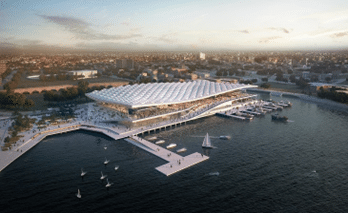
Windtech has had the privilege to work collaboratively with prominent local architectural firm BVN in association with Danish architectural firm 3XN, on the iconic flagship project that is the New Sydney Fish Market. Windtech also worked closely with the project’s principal contractor, Multiplex through detailed design process. The NSW Government is delivering a new Sydney Fish Market which will retain its authentic experience and strengthen its position as one of Australia’s leading tourist destinations.
Windtech was appointed to conduct extensive wind engineering services on the $750 million project from mid 2017 to mid 2023. This monumental development, located in the Blackwattle Bay precinct, will deliver over 6,000 square meters of new public open space within a 4-storey market hall along with restaurants, cafés, bars, fishmongers, specialty food retailers and other world-class amenities and attractions, which will be joining Sydney’s renowned harbourside. The New Sydney Fish Market not only represents a significant step forward in the realm of modern seafood commerce but also incorporates the latest technological advances. Throughout its construction, this monumental development has generated more than 700 jobs, and upon becoming fully operational, it is estimated to sustain an additional 700+ jobs, contributing to both economic growth and the infusion of advanced technology into the industry.
Figure 1: Aerial and Internal perspectives of the New Sydney Fish Market
The most noticeable feature of this building is undoubtedly the distinctive wave-shaped and scale-patterned roof. During the Design Development phase, Windtech was commissioned to conduct a Long Span Roof Structural Loads Study to accurately determine the wind loads on both the cladding and the loads on the structure. This required careful consideration of the effect of the scales on the overall wind drag. Testing was performed at one of the 3 boundary layer wind tunnel facilities, located at Windtech’s global head office in Sydney, using a detailed 3D printed 1:300 scale model of the development. From conducting this study it was possible to provide detailed and accurate design pressures for each facet of the building envelope as well as load cases in the form of net panel pressures (including 42 panels for the roof), which is not possible using wind loading standards for such an unusual building forms.
Figure 2: Contours of Maximum (LHS) and Minimum (RHS) net roof pressures.
A detailed wind environment study was undertaken for the various outdoor areas as well as an assessment of the Universal Thermal Comfort Index (UTCI) for some critical outdoor spaces, which provides a more wholistic assessment of the outdoor comfort, accounting for local wind speeds, temperature, humidity, and solar radiation.
A study was also undertaken to assess the impact of wind loads on two types of door closers by applying incremental wind loads to the proposed pivot door system, within our wind tunnel. Windtech also carried out a Solar Reflectivity Study to assess the potential glare impact from the structure including reflections from the faceted roof.
Figure 3: Windtech’s wind tunnel study model
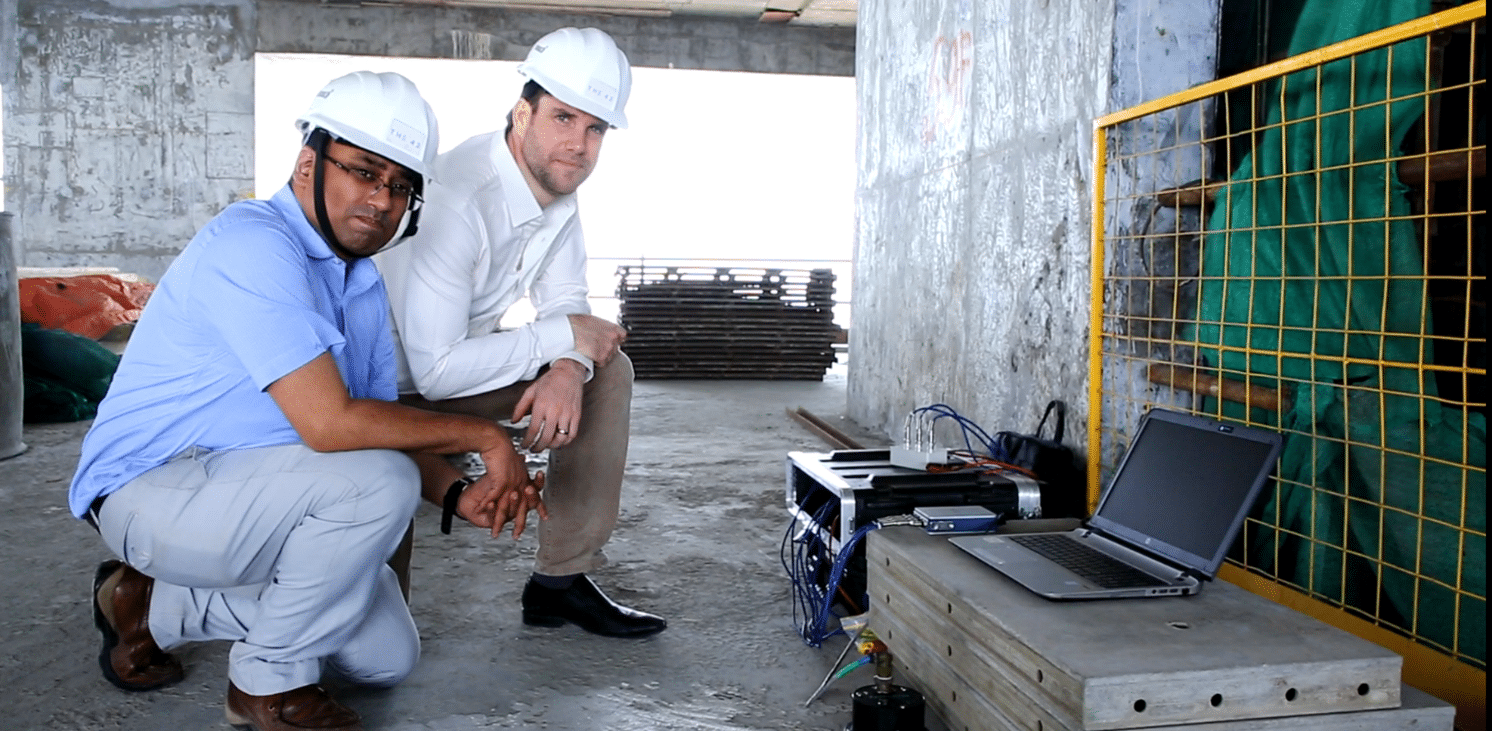
In today’s dynamic urban landscape, the demand for tall buildings is on the rise, driven by factors such as population growth and the need for sustainable urban development. As cities across the world reach for the sky, engineers and architects are faced with the challenge of not only designing structures that meet stringent safety standards but also ensuring that occupants experience a comfortable environment.
One crucial aspect that comes into play in the design of tall buildings is the consideration of wind-induced motion. In recent times, fire hydrant tanks have emerged as an important part of performance-based fire design, particularly for buildings exceeding 135 meters in height – according to the Australian building Code (NCC 2022) buildings above this height are not amenable to the deemed to satisfy provisions in AS 2118 due to higher system pressure requirements.
Beyond their primary function in fire safety, fire hydrant tanks have revealed an unexpected yet highly valuable secondary role in enhancing building comfort. Tall structures, while marvels of modern engineering, can be susceptible to wind-induced motion. Just as individuals have varying thresholds for experiencing motion sickness on a ferry, the sensitivity to building motion varies widely. While established criteria exist for acceptable building acceleration levels, it’s important to acknowledge that there will always be occupants who may feel uncomfortable, even within these prescribed limits. Adapting the same fire hydrant tanks to also serve as tuned liquid motion dampers (TLDs) is a very cost-effective way of accommodating these more sensitive occupants even where the building accelerations happen to meet the prescribed criteria.
Conventional methods of stiffening a building, while effective in some cases, can be costly and may inadvertently exacerbate sensitivity to motion. Increasing structural rigidity can bring the natural frequency closer to the peak of the human body’s response spectrum, potentially heightening sensitivity to motion. This is where TLDs emerge as a cost-effective solution.
Unlike traditional approaches, tuned liquid dampers operate by reducing building motion without the need for increased structural stiffness. This innovative technique not only proves highly effective but is also remarkably cost-effective, especially when integrated with an existing fire hydrant tank.
The engineers at Windtech Consultants have honed the art of tailoring fire hydrant tanks to harmonize seamlessly with a building’s natural frequency. This optimization enhances their efficiency as tuned liquid dampers. Moreover, Windtech has developed ingenious energy dissipation techniques within these tanks, incurring minimal additional costs.
From a logistical perspective, clients often lean towards reinforced concrete tanks. This choice not only sidesteps extended lead times but also avoids the associated expenses of alternative fabrication methods. Windtech’s expertise in streamlining damper designs during peer reviews has yielded substantial cost savings.
The engineers at Windtech have been able to develop the most cost-effective forms of energy dissipation devices within these tanks at negligible cost. From a logistic standpoint our clients tend to opt for a reinforced concrete tank to avoid the long lead times and costs associated with other fabrication methods such as metal plates or GRC panels.
Whenever we are asked to peer review a damper design, we tend to be able to simplify the design to achieve significant cost saving. This especially happens when we are dealing with a regular tall building where a Tuned Mass Damper or some proprietary system is proposed – in these cases many millions of dollars can be saved. Even for a a recent case where a TLD damper was already proposed, we were able to significantly simplify the design of the TLD damper to achieve a staggering USD$300,000 in savings. In another instance, the additional cost of converting a fire hydrant tank into a tuned liquid damper amounted to as little as USD$50,000. At that price, it would make sense to include such a measure even if the building acceleration is just inside the target criterion, given the broad range of sensitivity of humans to building motion.
Figure 1. Measuring Dynamic Properties of The42, Kolkata, Dattatreya Das (Left), Aaron Lefcovitch (Right)
As cities continue their upward trajectory, the integration of fire hydrant tanks as tuned liquid dampers represents a significant advancement in tall building design. By addressing both fire safety and building comfort in a synergistic manner, engineers and architects are ushering in a new era of innovative and cost-effective solutions.
In this rapidly evolving field, Windtech Consultants stands at the forefront, offering tailored expertise to ensure that tall structures not only reach for the sky but also provide a safe and comfortable environment for their occupants.
If you are working on any projects that could benefit from the capabilities presented in this article, please reach out to our regional offices Sydney & Melbourne, Australia, London, UK, and Mumbai, India. New York & Miami, USA, Toronto, Canada, Dubai, Hong Kong & Singapore, we guarantee to support you wherever you are based.
To get regular updates on news and events, please follow us on our LinkedIn page.
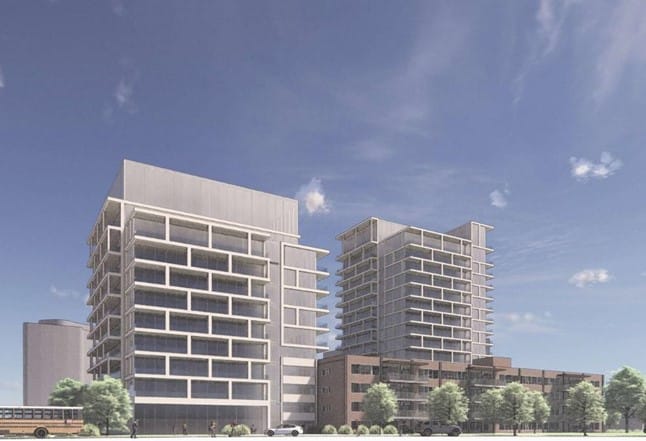
150 The Donway West and 4 Overland Drive, located in the Don Mills area of North York, is a perfect example of the intensification necessary to meet the increased housing demand resulting from high population inflow to the Greater Toronto Area (GTA) and the unaffordability of homeownership in Ontario. Akelius plans to build up the existing two-building site by adding two new residential market-rate rental buildings, as shown in Figure 1 below.

Diamond and Schmitt designed the two new mid-rise buildings to complement the existing structures by incorporating a brick similar to that used in the existing rental buildings. They then enhanced the façade with glass and white metallic features while maintaining the boxy shape to integrate old and new aesthetics fully. The project also involves the addition of two underground parking levels and a central courtyard, so not only would this project target the undersupplied rental market while providing transit accessibility, but it would also improve the ground level and below-grade conditions of the existing site with soft and hard landscaping.
Windtech was pleased to provide the pedestrian wind environment study for the site as a part of the requirements set forth by the City of Toronto for site plan approval. Ellen Marejka, an Associate Director of Windtech’s Toronto Office remarks, “As you can imagine, wind contributes to human comfort and can impact everyday activities whether it be waiting at a bus stop or sitting on a park bench. The wind comfort, and even thermal comfort, of outdoor public spaces, is crucial to the functionality of the overall design. A pedestrian-level wind study strives to address any of these wind concerns at the site before any groundbreaking or actual construction occurs. This is done by ensuring the wind conditions on and around the site are within acceptable comfort criteria throughout all seasons”.
But what triggers the need for a pedestrian wind study?
Toronto classifies the need based on the location of the development and the height of the building. Generally speaking, the taller the building, the greater the need. The City accepts two types of wind studies: wind tunnel studies (which was the approach in this project) or computational fluid dynamics modelling (which Windtech also offers).
With the help of the architect and developer, Windtech created a digital model of the study buildings and the “proximity model” or “surrounds” (both terms are used to describe the surrounding environment, shown in grey in the figure below).
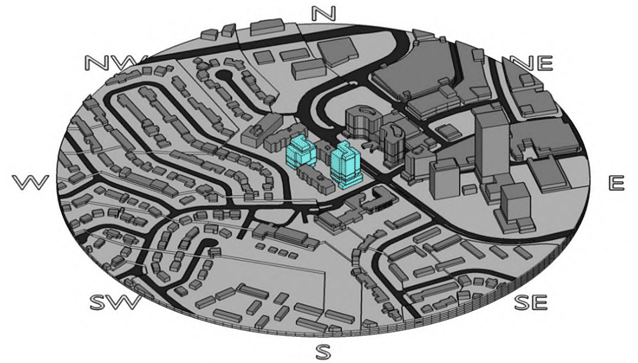
Once the digital model was created, a physical model was fabricated out of foam using computer-aided manufacturing. Pressure sensors were installed at the ground-level locations, and each location was classified based on Table 1 below. The model was placed on a turntable in one of our four wind tunnels and tested at the prescribed number of wind directions. There were two testing scenarios completed: the existing site conditions without the proposed development and the site conditions with the proposed development.
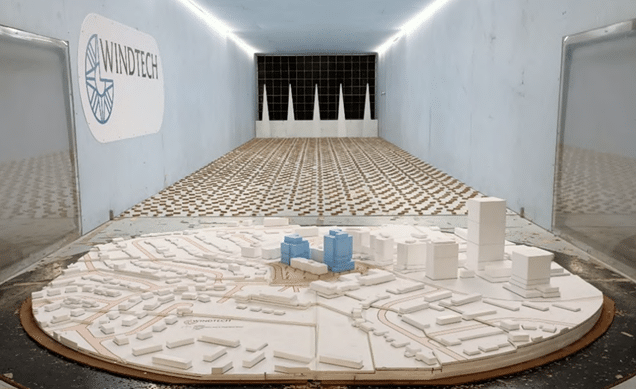
The results of the wind tunnel study were compared to the comfort criteria in Table 1. For the most part, the results were within acceptable limits. However, where the comfort criteria were exceeded, and a location was deemed too windy, Windtech proposed mitigation measures to alleviate the wind effects. This includes a 3m awning to span the south and western corners of the 150 The Donway West building and densely foliating evergreen landscaping features in the courtyard region. These mitigation features would reduce the wind to an acceptable level while having the least possible impact on the architectural design or aesthetic features.
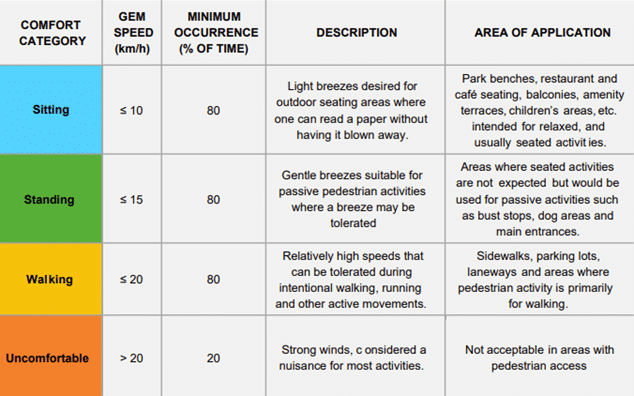
There is a growing need for more purpose-built rental developments in the GTA like the one proposed by Akelius. As mentioned by Shaun Hildebrand from Urbanation: “The GTA rental market remained substantially undersupplied during the first quarter of 2023. Even though supply is set to increase in the near-term, it is expected to be short-lived and insufficient to offset demand.” While this two-building development proposes the addition of much needed 242 rental units, there are bigger plans to develop and intensify the Don Mills area to meet population demands. Currently, there are ten development applications within a 1-kilometre radius as shown in Figure 4.
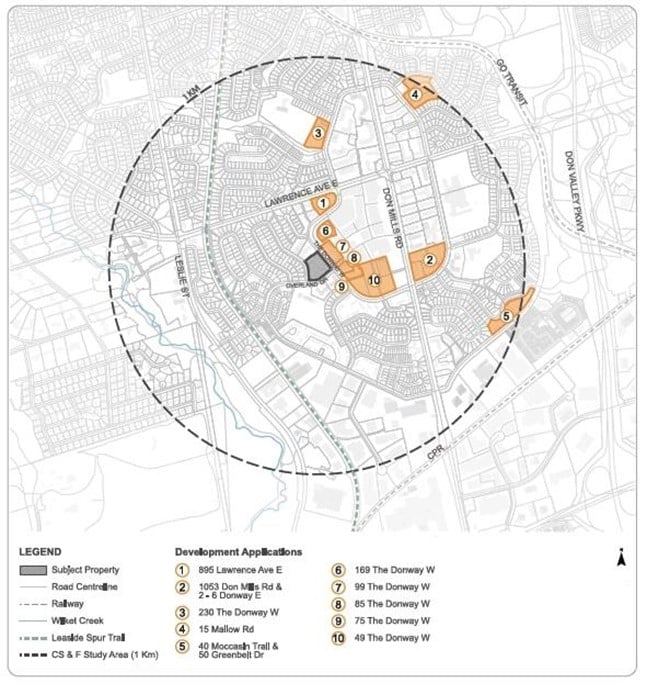
Windtech is happy to announce that we have opened an office in Toronto to serve our clients in the GTA better. We offer wind environment studies wind tunnel studies (like this one), or CFD studies for new developments in accordance with the city requirements. This type of wind study is required for site plan approval in most urban municipalities in southwestern Ontario.
If you are working on any projects that could benefit from the capabilities presented in this article, please reach out to our regional offices Sydney & Melbourne, Australia, London, UK, and Mumbai, India. New York & Miami, USA, Toronto, Canada, Dubai, Hong Kong & Singapore, we guarantee to support you wherever you are based.
To get regular updates on news and events, please follow us on our LinkedIn page.
Regardless of your role in the professional sphere, mastering certain soft skills is essential, with problem solving topping the list. Not everyone is an innate problem solver, and this skill is increasingly crucial in our complex, fast-paced world.
What exactly do we mean by ‘problem solving’? It’s the ability to identify, understand, and effectively address issues, whether they impact your entire organization or just your personal work experience. Remember, from minor hiccups to major organizational challenges, each problem presents an opportunity for growth and innovation. And for those times when you don’t know how to do your academic work, remember that services like Write My Papers are there to support you, offering expert assistance for your paper-writing-related problems.
Here are five effective strategies to sharpen your problem-solving skills, viewing issues through a solution-oriented lens:
Implementing the solution is just the beginning. Monitor its effectiveness, be ready to make adjustments, and remember that problem-solving is a skill honed over time.
What are the 5 steps of effective problem solving?
The steps include identifying and understanding the problem, researching its background, visualizing it, brainstorming solutions, and choosing the best one.
How important are problem-solving skills in the workplace?
Problem-solving skills are crucial in the workplace. They enable employees to efficiently tackle challenges, innovate solutions, and contribute significantly to organizational goals. These skills enhance adaptability, creativity, and teamwork, making them vital for career progression and organizational success.
How to develop a problem-solving mindset?
Practice, patience, and openness to learning from each experience are key. Use the outlined steps and collaborate with your team for enhanced outcomes.
Can problem-solving skills be learned or are they innate?
Problem-solving skills can definitely be learned and improved over time. While some individuals may have a natural inclination towards effective problem-solving, these skills can be developed through practice, exposure to different scenarios, and learning from both successes and failures.
This guide is designed to assist you in growing your problem-solving skills. Whether you’re facing challenges at work or in your daily life, these techniques will prepare you to face them head-on.
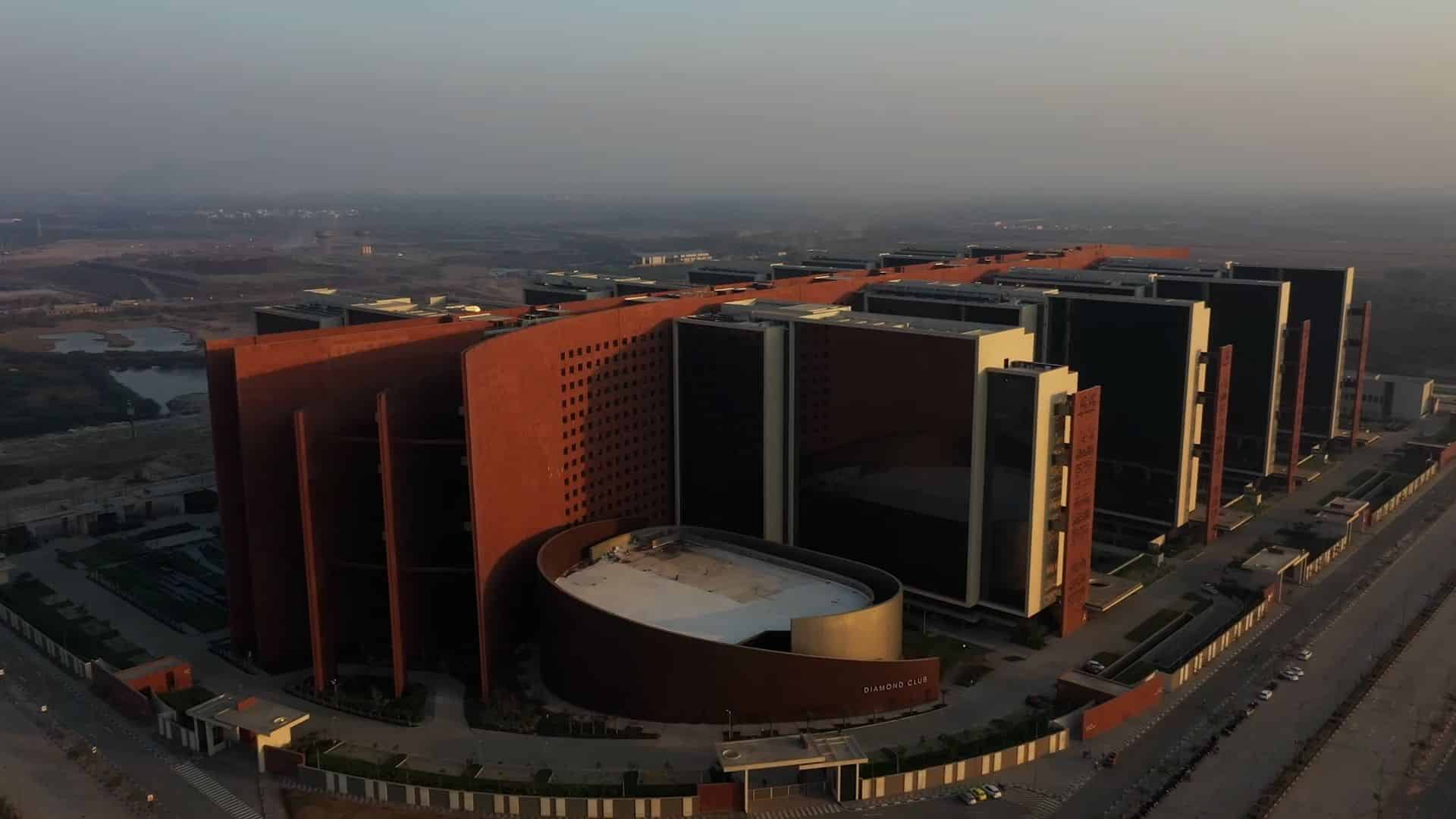
The Surat Diamond Bourse is a remarkable structure that redefines architectural possibilities and a symbol of contemporary architecture and engineering. Emerging as the world’s largest office building, surpassing even the Pentagon in size, this remarkable structure redefines architectural boundaries. Comprising a sequence of nine interconnected rectangular modules that radiate from a central “spine,” this sprawling 15-story complex occupies over 35 acres. Notably, its distinctive design is highlighted by a substantial standalone blade wall, a key architectural element.
Windtech’s specialized wind engineering services played a pivotal role in safeguarding the structural integrity of this innovative masterpiece, with unique analysis required to determine the wind actions on the blade walls. Aaron Lefcovitch, a Director of Windtech, indicated that “The blade walls are not too dissimilar to stadium roofs or large canopies in that they fall into the same category of structures known as Long-span structures. Long-span Structures are inherently sensitive to the forces of wind due to the extent of the area exposed to the wind, relative light weight, and low stiffness. Unlike tall buildings, it becomes exceedingly more difficult to determine the loads on these structures using a code-based approach, especially when the natural frequency of the structure is lower than 0.8Hz.
There have been numerous cases (e.g., WIN Stadium in Wollongong), where code-based design was unable to predict the critical asymmetric load cases that are dictated by a structure’s unique support system, resulting in design loads that do not reflect reality. The implication is a structural design that may not be adequate to resist the actual wind loads or is significantly over designed, affecting the aesthetics of the design or adding unwanted cost to the project during construction.”
The long-span walls of the wind tunnel model were fitted with a total of 183 pressure sensors, divided into 83 panels as indicated in Figure 3. Several pressure sensors were assigned to each panel, and the time-series of the results from each pressure sensor, which are acquired simultaneously for all pressure sensors, are area-weighted to determine the average net pressure acting on each panel.
Critical load cases were suggested in this study to account for the various wind load combinations acting on the long-span wall structures. Once the various critical load cases were determined, these were applied by the structural engineer to the FEA model of the long-span wall structures, allowing them to adequately design the member sizes and lateral stiffeners that were used to make up the structural design.
Tony Rofail, Managing Director of Windtech, indicated that “There are many ways to determine wind loads on long-span structures depending on the client’s requirements. The simple area-averaging technique, as was used on the Surat Diamond Bourse project, is the simplest method. However, if the client is keen to optimize the structural design, we can offer the Load Response Correlation (LRC) method, also referred to as the Load Effect method. This method produces unique panel load case combinations linked to a set of different types of maximum and minimum Load Effects spread across the structure such as the the reaction force at a node, stress in a beam, deflection of a node, or any Load Effect that the structural engineer sees as being critical to the design of the structural system. It is more computationally intensive, but not subject to the same conservative assumptions seen in simpler techniques. We see it commonly used when clients wish to pursue more pure forms of performance-based design to reduce project costs, or when there is a requirement to minimise the structural member sizing from a design aesthetics point of view. The Load Effect method also allows us to account for resonant response effects, which is important when the natural frequency of the structure falls below 0.8Hz.
This project is a shining example of Windtech’s commitment to pushing the boundaries of wind engineering innovation and delivering solutions that shape the future of modern architecture.
If you are working on any projects that could benefit from the capabilities presented in this article, please reach out to our regional offices Sydney & Melbourne, Australia, London, UK, and Mumbai, India. New York & Miami, USA, Dubai, Hong Kong & Singapore, we guarantee to support you wherever you are based.
To get regular updates on news and events, please follow us on our LinkedIn page.